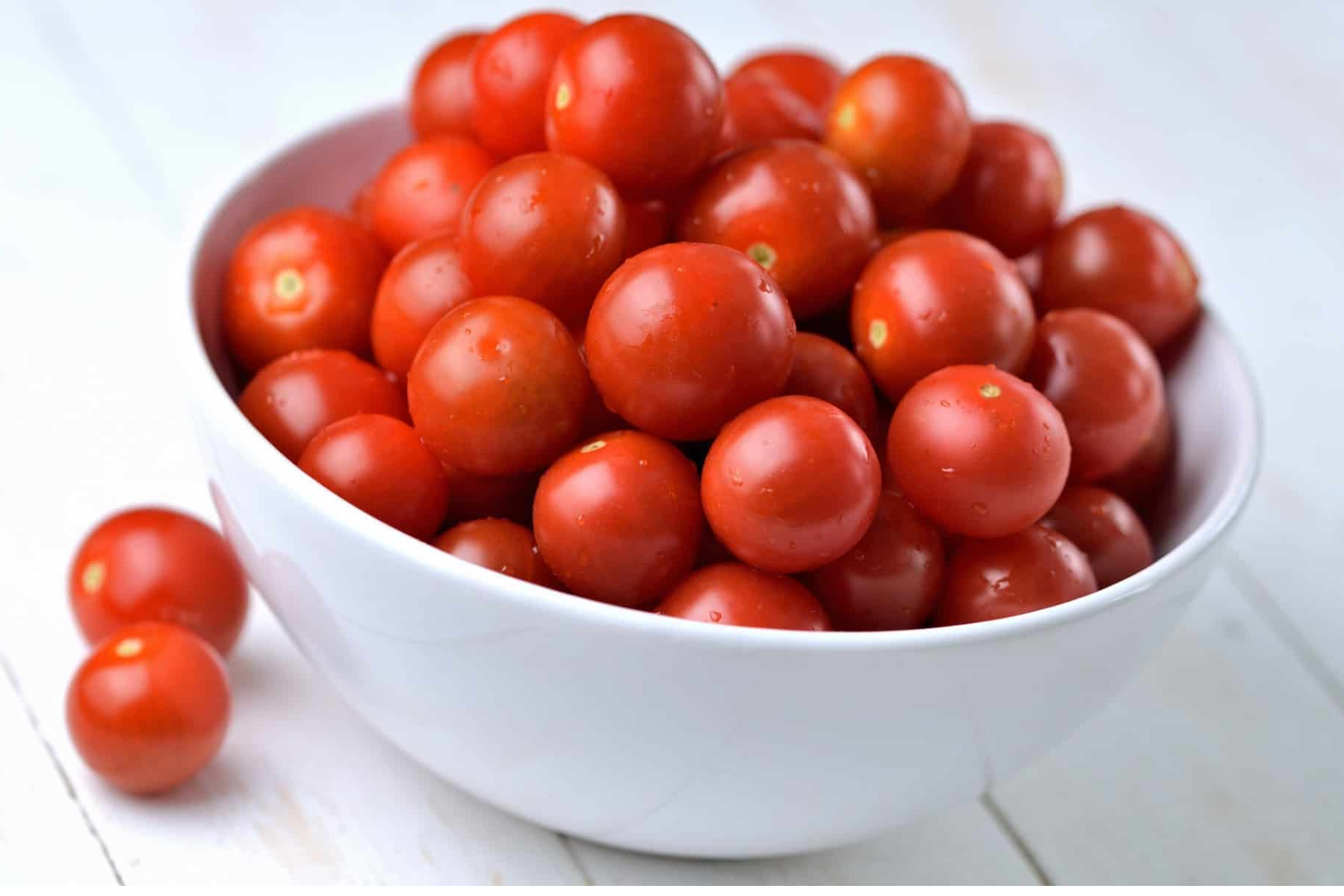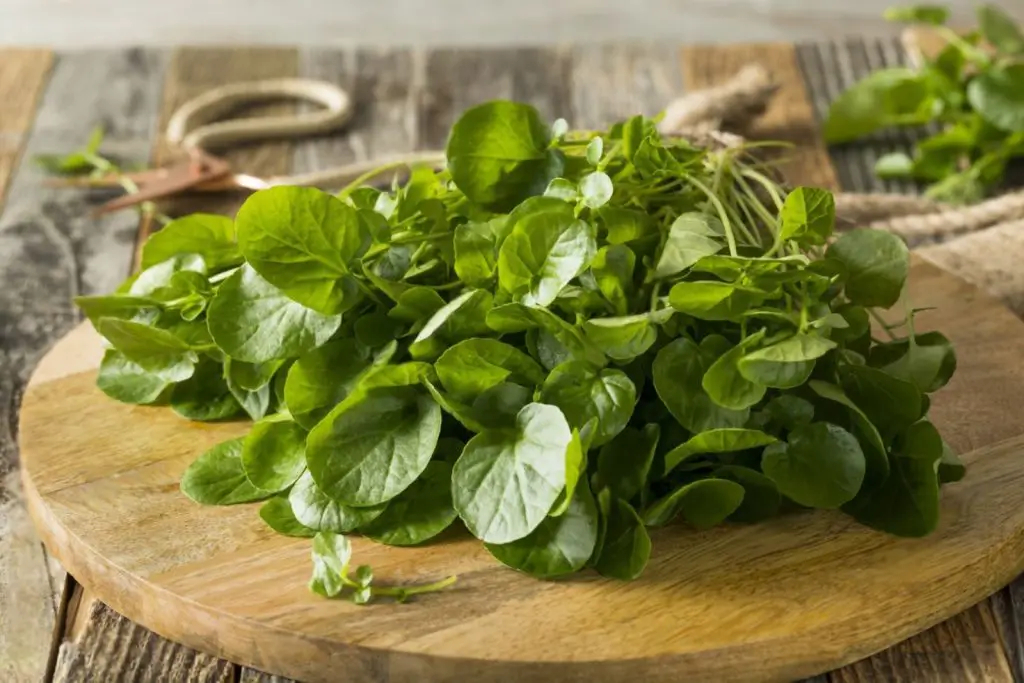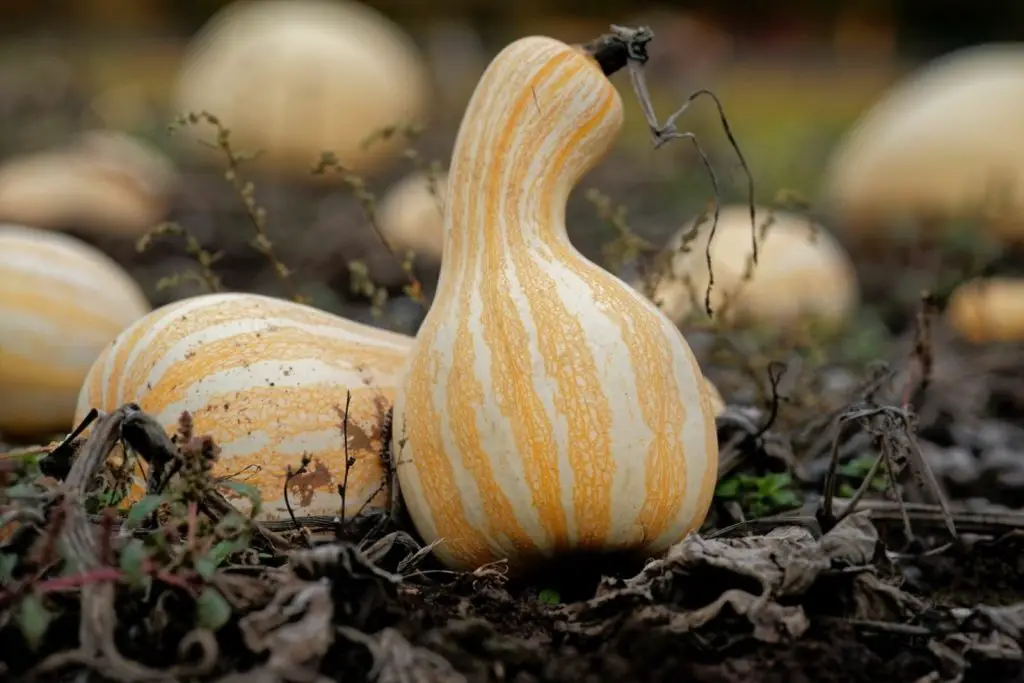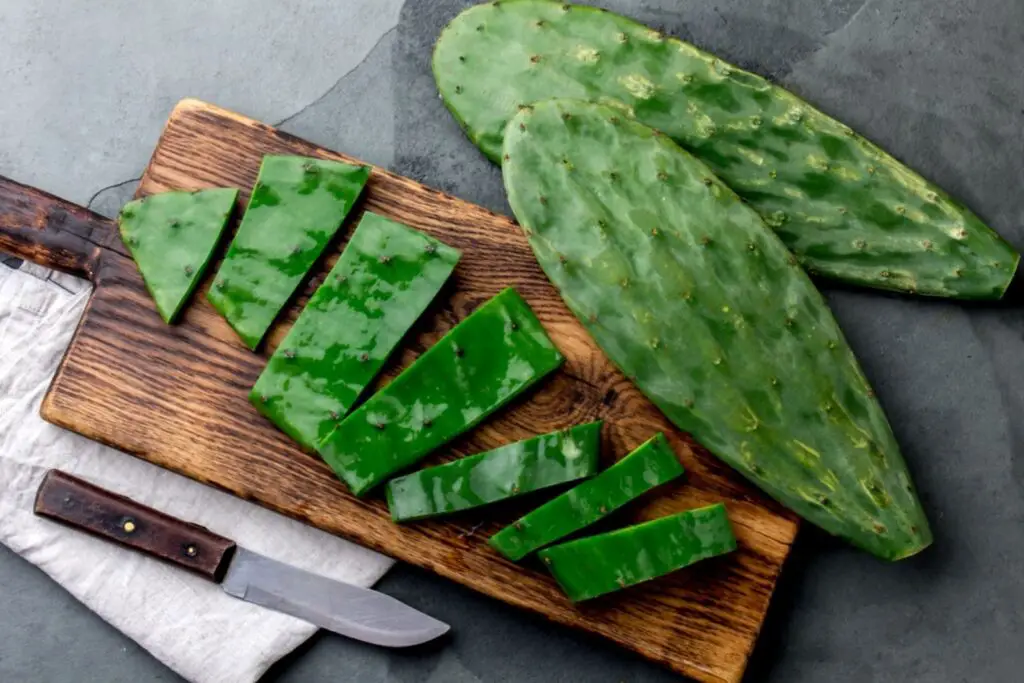
Plum tomatoes, also known as Roma tomatoes, are a popular variety of tomatoes that are widely used in cooking and canning. With their firm flesh and rich flavor, plum tomatoes are perfect for sauces, soups, and stews. Freezing plum tomatoes is a great way to preserve their taste and texture, allowing you to enjoy them even when they’re out of season. By following a few simple steps, you can freeze plum tomatoes effectively and ensure they maintain their quality for future use. This article provides a comprehensive guide on freezing plum tomatoes.
Here’s a step-by-step guide on how to freeze plum tomatoes:
- Step 1: Select ripe and fresh plum tomatoes
- Step 2: Wash and remove the cores
- Step 3: Blanch the tomatoes
- Step 4: Peel and dice the tomatoes (optional)
- Step 5: Drain and dry the tomatoes
- Step 6: Arrange the tomatoes for flash-freezing
- Step 7: Package and seal the tomatoes
- Step 8: Label and date the packages
- Step 9: Store in the freezer
Step 1: Select ripe and fresh plum tomatoes
When freezing plum tomatoes, it’s crucial to start with tomatoes that are ripe and fresh. Choosing the right tomatoes will ensure that they retain their flavor and texture after freezing. Here’s why selecting ripe and fresh plum tomatoes is important:
- Flavor: Ripe plum tomatoes have a sweet, tangy flavor that intensifies during the freezing process. Their natural sugars are fully developed, providing a delicious taste even after thawing. Choosing tomatoes that are at their peak ripeness will contribute to the overall quality of your frozen tomatoes.
- Texture: Fresh plum tomatoes should be firm to the touch. This firmness will help the tomatoes maintain their structure during freezing, preventing them from becoming mushy or overly soft. Firm tomatoes freeze better and retain their texture, making them ideal for various culinary applications.
- Color: Vibrant, deep-colored plum tomatoes indicate that they are at their prime ripeness. The color is not only visually appealing but also an indicator of the tomato’s overall quality. Avoid tomatoes with any green patches, as these are typically underripe and may not develop their full flavor during freezing.
- Spoilage and blemishes: Before freezing, it’s essential to inspect the tomatoes for any signs of spoilage or blemishes. Look for soft spots, mold, or bruises, as these can negatively affect the quality of the frozen tomatoes. Choosing tomatoes that are free from such imperfections will ensure that your frozen plum tomatoes remain fresh and flavorful.
Can I freeze overripe plum tomatoes?
Yes, you can freeze overripe plum tomatoes. Freezing them is a great way to prevent waste. However, keep in mind that the texture may be softer after thawing, so they are best suited for cooked dishes like sauces or soups rather than fresh applications.
Step 2: Wash and remove the cores
Before freezing plum tomatoes, it’s important to wash them thoroughly to remove any dirt, debris, or potential contaminants. Additionally, removing the cores helps ensure even freezing and preserves the integrity of the tomatoes. Here’s why washing and removing the cores is a crucial step:
- Cleanliness: Plum tomatoes, like any fresh produce, can accumulate dirt, pesticides, or other residues during cultivation, transportation, or storage. Washing them under cool running water helps eliminate these impurities, making the tomatoes safe for consumption and preventing any unwanted flavors or substances from affecting the final product.
- Hygiene: Washing the tomatoes helps remove bacteria or microorganisms that may be present on the surface. This step is particularly important if you plan to use the tomatoes without cooking them, such as in salads or as garnishes. Properly cleaning the tomatoes minimizes the risk of foodborne illnesses.
- Core removal: The core of a tomato refers to the tough area around the stem attachment. While it’s edible, it can be unpleasant to consume due to its tough texture and bitter taste. Removing the cores before freezing allows for more consistent freezing and helps maintain the desired texture and flavor of the tomatoes. It also ensures that any potential bacteria or mold present in the core area are discarded.
To wash the plum tomatoes, hold them under cool running water and gently rub the surface to remove any dirt or debris. Pay special attention to the stem end and the areas around it. If you notice any stubborn dirt or residues, you can use a vegetable brush to gently scrub the surface. After washing, pat the tomatoes dry with a clean kitchen towel or paper towels.
To remove the cores, use a sharp knife and carefully cut around the stem attachment area in a circular motion. Make a shallow cut to remove just the core without wasting too much flesh. Alternatively, you can slice off the stem end with a diagonal cut, removing both the core and the tough part.
Can I freeze plum tomatoes with the seeds?
Yes, you can freeze plum tomatoes with the seeds intact. Freezing the tomatoes with seeds won’t significantly affect their taste or texture. However, keep in mind that the seeds may become softer after thawing, and some recipes may require removing them for desired consistency.
Step 3: Blanch the tomatoes
Blanching is an essential step in freezing plum tomatoes as it helps to preserve their color, texture, and flavor. By briefly immersing the tomatoes in boiling water and then immediately transferring them to ice water, blanching serves several important purposes. Here’s why blanching is necessary when freezing tomatoes:
- Skin removal: Blanching makes it easier to remove the skins from the tomatoes. The brief exposure to boiling water causes the tomato skins to loosen, allowing you to peel them off effortlessly. Removing the skins before freezing helps maintain a smooth texture and prevents them from becoming tough or chewy after thawing.
- Enzyme inactivation: Tomatoes contain enzymes that can lead to quality degradation over time. Blanching helps deactivate these enzymes, which can cause texture changes, flavor loss, and discoloration during freezing. By blanching the tomatoes, you halt the enzyme activity, preserving the overall quality of the tomatoes throughout the freezing process.
- Retention of color and nutrients: Blanching helps preserve the vibrant color of the tomatoes. The heat from the boiling water stops the enzymes responsible for color degradation, resulting in tomatoes that retain their bright hues. Additionally, blanching for a short time helps retain the essential nutrients present in the tomatoes, ensuring they remain nutritious even after freezing.
The process of blanching plum tomatoes is straightforward. Start by bringing a pot of water to a rolling boil. While the water is heating, prepare a large bowl filled with ice water. Carefully lower the tomatoes into the boiling water using a slotted spoon or tongs. Let them blanch for about 30 seconds to 1 minute or until you notice the skins starting to loosen.
Once the blanching time is complete, quickly transfer the tomatoes to the ice water bath. The ice water rapidly cools the tomatoes, preventing them from overcooking and retaining their crispness. The temperature shock also helps to stop the cooking process, ensuring that the tomatoes remain firm and retain their desired texture.
After blanching and cooling in the ice water, the plum tomatoes are ready for the next steps in the freezing process. The blanching process enhances the quality of the tomatoes, making them more suitable for long-term storage in the freezer while maintaining their taste, appearance, and nutritional value.
Can I freeze plum tomatoes without blanching them?
Blanching plum tomatoes before freezing is recommended as it helps preserve their quality, including flavor, texture, and color. However, if you prefer not to blanch them, you can still freeze them. Keep in mind that the tomatoes may have a slightly different texture and may be more difficult to peel after thawing.
Step 4: Peel and dice the tomatoes (optional)
After blanching plum tomatoes, the skins become loose and can be easily removed. Whether or not to peel and dice the tomatoes is a matter of personal preference and the intended use of the frozen tomatoes. Here’s why peeling and dicing the tomatoes after blanching is an optional step:
- Texture: The skins of plum tomatoes can become tough and chewy after freezing, which may not be desirable in certain recipes. Peeling the tomatoes after blanching ensures a smoother texture in dishes where the skin would be noticeable or detract from the overall enjoyment. However, if you don’t mind the texture of the skins or prefer the added fiber they provide, you can choose to leave them on.
- Visual appeal: Some recipes may benefit from the visual appeal of skinless and uniformly diced tomatoes. By peeling and dicing the tomatoes after blanching, you create a more visually consistent appearance in dishes where the tomatoes are prominently featured.
- Versatility: Dicing the tomatoes after blanching offers versatility in how you can use them later. Pre-diced tomatoes are convenient for adding to sauces, soups, stews, or salsas without the need for additional preparation. They can be easily incorporated into recipes, saving time and effort during meal preparation.
However, it’s important to note that freezing plum tomatoes whole without peeling and dicing is a valid option. Freezing them in their natural state can be more suitable for recipes that call for whole tomatoes, or if you prefer to have the option to peel and dice them after thawing, depending on the specific dish you plan to make.
To peel the blanched plum tomatoes, gently grasp the tomato and pull the loosened skin away from the flesh. The skins should easily come off without much effort. If desired, you can then proceed to dice the peeled tomatoes into your preferred size, removing the stem end and any unwanted parts.
Step 5: Drain and dry the tomatoes
After blanching and cooling the plum tomatoes in ice water, it’s important to drain and dry them before freezing. Properly draining and drying the tomatoes serve several purposes and contribute to the overall quality of the frozen tomatoes. Here’s why draining and drying are necessary:
- Excess moisture removal: The blanching and cooling process can leave the tomatoes with excess moisture on their surfaces. Draining the tomatoes allows this excess water to be removed, preventing ice crystals from forming during freezing. Excessive moisture can lead to freezer burn or affect the texture and taste of the tomatoes once they’re thawed. Proper draining helps maintain the optimal quality of the frozen tomatoes.
- Preventing ice formation: Drying the tomatoes after draining further reduces the moisture content, minimizing the chance of ice crystals forming during freezing. Ice crystals can cause cell damage and affect the texture and taste of the tomatoes. By patting the tomatoes dry, you help maintain their structure and integrity while in the freezer.
- Storage efficiency: Removing excess moisture and drying the tomatoes ensures they don’t stick together when placed in freezer bags or containers. Dry surfaces help prevent the tomatoes from clumping or freezing in large, solid blocks, allowing for easier separation and portioning when it comes time to use them.
To drain the plum tomatoes, simply remove them from the ice water bath and place them in a colander or on a clean, absorbent surface. Allowing the tomatoes to sit in the colander enables any remaining water to drain away naturally.
After draining, gently pat the tomatoes dry using a clean kitchen towel or paper towels. Be careful not to apply too much pressure that could crush or damage the tomatoes. The goal is to remove any remaining moisture on the surface without altering their shape.
Step 6: Arrange the tomatoes for flash-freezing
When freezing plum tomatoes, how you arrange them for freezing can impact their quality and ease of use later on. Whether you choose to freeze them whole or in pieces, arranging the tomatoes properly ensures efficient freezing and prevents them from sticking together. Here’s why arranging the tomatoes for flash-freezing is important:
- Individual freezing: Flash-freezing refers to the process of freezing the tomatoes quickly and individually. This method helps maintain the integrity of each tomato and prevents them from clumping together. Individual freezing allows you to easily retrieve the desired quantity of tomatoes from the freezer without having to thaw an entire batch.
- Preventing clumping: If the plum tomatoes are frozen together in a solid block, it can be difficult to separate them when you only need a few at a time. By arranging the tomatoes in a single layer, whether whole or in pieces, on a baking sheet, you ensure that they freeze separately. This prevents them from sticking together, making it easier to portion them out when needed.
- Efficient freezing: Placing the tomatoes in a single layer on a baking sheet allows for efficient and even freezing. The increased surface area exposure to the cold air in the freezer helps the tomatoes freeze more quickly. Quick freezing helps maintain the quality, texture, and flavor of the tomatoes and minimizes the formation of large ice crystals.
To arrange the tomatoes for flash-freezing, start by deciding whether you want to freeze them whole or in pieces. If freezing them whole, place the tomatoes, with or without skins, on a baking sheet in a single layer, making sure they’re not touching each other. If you prefer to freeze them in pieces, dice or slice the tomatoes to your desired size and spread them out on the baking sheet.
Once arranged, place the baking sheet with the tomatoes in the freezer. Let them freeze for a few hours, or until they are completely frozen. The exact freezing time will depend on the size and temperature of your freezer. It’s recommended to check them periodically to ensure they are frozen solid.
By flash-freezing the plum tomatoes individually on a baking sheet, you ensure that they freeze quickly, maintain their individuality, and don’t clump together. This arrangement allows for easy portioning and retrieval from the freezer when you need them for your favorite recipes.
Step 7: Package and seal the tomatoes
After flash-freezing the plum tomatoes, it’s essential to package them properly to maintain their quality and protect them from freezer burn. Transferring the frozen tomatoes into airtight freezer bags or containers and removing excess air before sealing them tightly offers several benefits. Here’s why proper packaging and sealing are important:
- Protection from freezer burn: Freezer burn occurs when air comes into contact with the frozen food, causing moisture to evaporate and leaving the food dehydrated and with a dry, unpleasant texture. Packaging the tomatoes in airtight containers or bags helps create a barrier that prevents air from reaching the tomatoes, reducing the risk of freezer burn. This ensures that the tomatoes retain their flavor, texture, and overall quality during storage in the freezer.
- Preservation of taste and aroma: Airtight packaging helps seal in the natural flavors and aromas of the plum tomatoes. It prevents any odors from the freezer or other food items from being absorbed, maintaining the integrity of the tomatoes’ taste and preventing them from developing off-flavors.
- Space efficiency and organization: Using freezer bags or containers allows for efficient use of freezer space. It enables you to stack and organize the frozen tomatoes, making it easier to find and retrieve the desired quantity when needed. Proper packaging also prevents the tomatoes from sticking together, facilitating portioning and avoiding the need to thaw an entire batch.
To package the frozen plum tomatoes, first, ensure they are fully frozen before proceeding. Then, transfer them into airtight freezer bags or containers. If using bags, remove as much air as possible before sealing them tightly. Squeezing out excess air helps minimize the risk of freezer burn and maintains the optimal texture of the tomatoes. If using containers, ensure they have airtight lids that provide a secure seal.
Step 8: Label and date the packages
Labeling and dating the packages of frozen plum tomatoes is a simple but important step to help you stay organized and maintain a rotation system in your freezer. By clearly marking the date of freezing and the contents of each bag or container, you can keep track of the tomatoes’ storage time and ensure their optimal quality. Here’s why labeling and dating are crucial:
- Tracking storage time: Freezing plum tomatoes extends their shelf life, but they still have a limited duration of optimal quality. By labeling the packages with the date of freezing, you have a reference point for tracking how long the tomatoes have been in the freezer. This allows you to use the oldest tomatoes first, maintaining a rotation system and preventing any tomatoes from being forgotten or stored for too long.
- Maintaining quality: Over time, frozen foods may experience changes in flavor, texture, and nutritional value. By knowing the freezing date, you can ensure you use the plum tomatoes within a reasonable time frame to enjoy them at their best. This helps you avoid consuming tomatoes that have been stored for an extended period and may have suffered from flavor deterioration or freezer burn.
- Inventory management: Labeling and dating the packages enable you to keep an organized inventory of your frozen plum tomatoes. By easily identifying the contents, you can plan your meals and recipes accordingly. This prevents the need to defrost and refreeze the tomatoes unnecessarily, as you can select the desired quantity for each use.
To label the packages, use a marker or adhesive labels. Write the current date (day, month, and year) clearly on each bag or container, along with the contents (“plum tomatoes”). Place the label or write directly on a visible area to make it easy to identify when accessing the freezer.
Remember to update the labels as you add new batches of frozen tomatoes to the freezer, ensuring accurate information for each package. If using adhesive labels, make sure they adhere securely to the bag or container, avoiding any smudging or fading of the written information over time.
Step 9: Store in the freezer
Once the plum tomatoes are properly labeled and packaged, it’s time to store them in the freezer. Proper storage conditions are crucial to maintaining the quality, flavor, and safety of the frozen tomatoes. Here’s why proper freezer storage is important:
- Temperature control: Freezers should be set at a temperature of 0°F (-18°C) or below. This low temperature is essential for maintaining the quality and safety of the frozen plum tomatoes. It helps inhibit the growth of bacteria and other microorganisms, preserving the tomatoes’ freshness and minimizing the risk of foodborne illnesses.
- Preservation of quality: Freezing the plum tomatoes at a sufficiently low temperature helps retain their flavor, texture, and nutritional value. The low temperature slows down enzymatic activity and prevents quality degradation, allowing the tomatoes to maintain their optimal taste and texture for an extended period.
- Space efficiency: When storing the labeled packages of plum tomatoes in the freezer, it’s important to arrange them in a way that maximizes space efficiency. This allows for better organization and optimal use of freezer space. Consider stacking the packages neatly or placing them in a designated area that is easily accessible.
To store the labeled packages of plum tomatoes, open the freezer and find a suitable location. Clear some space if needed and arrange the packages in a way that ensures efficient use of space. If you have multiple packages, stacking them neatly can help maximize space utilization. Ensure the packages are stable and won’t topple over.
If you have limited freezer space or plan to store other items alongside the plum tomatoes, consider using freezer shelves or dividers to create compartments and keep different items separate.
Additionally, periodically check and organize your freezer to ensure older packages are used before newer ones. Following a first-in, first-out (FIFO) approach will help ensure you use the oldest plum tomatoes first, maintaining freshness and reducing waste.
How long can I keep frozen plum tomatoes in the freezer?
Properly stored, frozen plum tomatoes can maintain their quality for around 8 to 12 months. However, for the best taste and texture, it’s recommended to use them within the first 6 to 8 months. Always check for signs of freezer burn or spoilage before using frozen tomatoes, and discard them if they show any signs of deterioration.
Other related questions
How do I defrost plum tomatoes?
To defrost plum tomatoes, there are a few methods you can use. The preferred method is to transfer the frozen tomatoes from the freezer to the refrigerator and allow them to thaw slowly overnight or for several hours. Alternatively, you can place the sealed bag or container of frozen tomatoes in a bowl of cold water, changing the water every 30 minutes until thawed. Avoid using hot water or microwaving as these methods can lead to uneven thawing and loss of texture.
Can I refreeze plum tomatoes?
It is generally not recommended to refreeze plum tomatoes once they have been thawed. Thawing and refreezing can negatively affect the texture and quality of the tomatoes, leading to a loss in flavor and potential degradation. It is best to use thawed plum tomatoes promptly or cook them before refreezing if necessary.
How do I know if the plum tomatoes have gone bad after being frozen?
After being frozen, if plum tomatoes develop an off smell, unusual discoloration, or a mushy texture, it is a sign that they may have gone bad. Freezer burn, which manifests as dry or discolored patches on the tomatoes, can also indicate spoilage. It is important to discard any frozen plum tomatoes that show signs of spoilage to ensure food safety and quality.
What are the best ways to use frozen plum tomatoes in recipes?
Frozen plum tomatoes are versatile and can be used in various recipes. They work well in sauces, soups, stews, and other cooked dishes where their texture and flavor blend in. Thawed tomatoes can also be used for salsas or purees. Consider adding them to your favorite tomato-based recipes as a convenient substitute for fresh tomatoes.
Can I freeze plum tomatoes that have been seasoned or flavored?
Yes, you can freeze seasoned or flavored plum tomatoes. However, keep in mind that the flavors may intensify during freezing and thawing, so adjust the seasoning accordingly. It’s generally best to freeze the tomatoes without excessive seasoning to maintain their versatility in various recipes.
Can I freeze plum tomatoes that have been cut into wedges or slices?
Yes, you can freeze plum tomatoes that have been cut into wedges or slices. Place the cut tomatoes in a single layer on a baking sheet for flash-freezing, and then transfer them to airtight containers or freezer bags. This allows for easier portioning and use in recipes later on.








